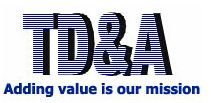1. What is ISO 13485:2016?

ISO 13485:2016 is an international standard that specifies requirements for a quality management system in the field of medical devices. This standard is designed to help organizations ensure that medical products consistently meet customer requirements as well as applicable regulatory requirements related to safety and performance.
2. Versions of the ISO 13485 Standard
- ISO 13485:1996 – First edition
- ISO 13485:2003 – First major revision
- ISO 13485:2016 – Current version (effective from March 1, 2016)
3. Legal and Regulatory Requirements Related to ISO 13485
In Vietnam:
According to Decree 36/2016/NĐ-CP, amended by 169/2018/NĐ-CP, manufacturers of medical devices must meet the following conditions:
- Article 12: Personnel must have appropriate qualifications and training.
- Article 13: Facilities and equipment must meet manufacturing requirements.
Obtaining ISO 13485 certification serves as an important piece of evidence in the registration dossier for product circulation and evaluation of manufacturing conditions.
In other countries:
- Europe: ISO 13485 is a fundamental requirement under MDR (EU) 2017/745.
- United States: The FDA recognizes ISO 13485 in assessing quality systems under 21 CFR Part 820.
- Canada, Australia, Japan, South Korea, Singapore: These countries either require or strongly recommend ISO 13485 certification in medical device registration dossiers.
4. Applicable Organizations
- Manufacturers and businesses dealing with medical devices
- Suppliers of components and accessories for medical devices
- Distributors and inspection bodies for medical equipment
- Organizations exporting medical devices to international markets
5. Key Clauses of ISO 13485:2016
Clause 1: Scope
Defines the scope of the quality management system (QMS).
Clause 2: Normative References
Lists documents referenced by the standard.
Clause 3: Terms and Definitions
Defines terminology used within the standard.
Clause 4: Quality Management System
- Defines the application scope of the QMS.
- Establishes core documentation such as the quality manual, policy, and quality objectives.
- Controls documents and records to ensure consistency and traceability.
- Implements risk management throughout the system.
Clause 5: Management Responsibility
- Demonstrates leadership commitment to developing and maintaining the QMS.
- Establishes quality policy and measurable objectives.
- Clearly assigns responsibilities within the organization.
- Conducts periodic reviews of the QMS.
- Holds management review meetings for system improvement.
Clause 6: Resource Management
- Identifies and provides adequate resources to implement the QMS.
- Ensures staff are properly trained and competent.
- Provides the necessary infrastructure and equipment.
- Maintains a safe working environment and controls contamination risks (if applicable).
Clause 7: Product Realization
- Plans product realization processes in line with requirements.
- Communicates and verifies customer requirements.
- Designs and develops medical devices.
- Assesses and selects suppliers for materials and components.
- Conducts manufacturing, inspection, and after-sales services.
- Validates special processes (those that cannot be verified later).
- Ensures traceability and product control.
- Manages measurement and monitoring equipment.
Clause 8: Measurement, Analysis, and Improvement
- Monitors and measures customer satisfaction.
- Conducts regular internal audits.
- Controls nonconforming products.
- Implements corrective and preventive actions.
- Continuously improves the system based on data and analysis.
6. Classification of Medical Device Risk Levels

7. Benefits of Implementing ISO 13485
- Improved ability to meet customer requirements and comply with national, regional, and international regulatory requirements for medical devices and instruments.
- Enhanced product quality and user safety, ensuring reliability and performance of medical equipment.
- Increased competitive advantage, stronger brand reputation, market expansion, increased revenue and profit, and easier access to export markets—especially where technical certification is a mandatory requirement for supply.
- Better risk management, supported by consistent product traceability and reliable service delivery.
- Reduced operating costs through effective and continuous improvement processes, leading to a more efficient management system.
- Relieves senior management from daily operational issues, allowing them to focus on strategic, long-term objectives.
- Improved relationships across the organization, including with employees, customers, and suppliers.
- Professional working environment with cohesive teams and increased employee productivity.
- Enhanced corporate credibility, supported by independent audits based on globally recognized industry standards.
